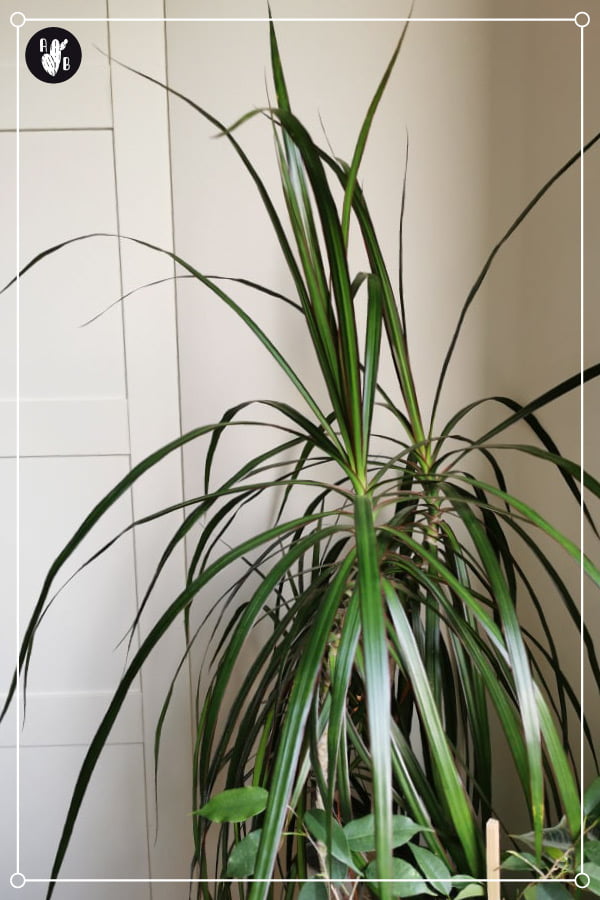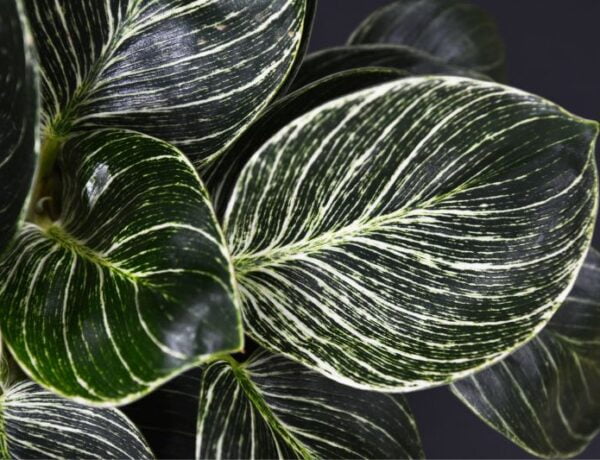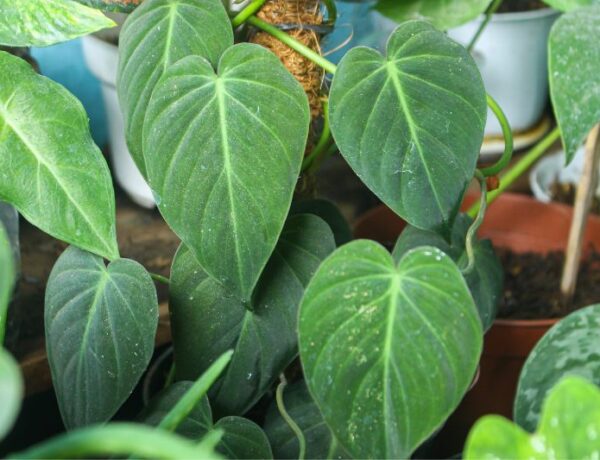Dracaena Marginata is a tough, drought-tolerant houseplant that comes with sword-like green leaves, edged with deep red that grow atop a small tree. Commonly known as Dragon Tree, it’s native to Madagascar and Mauritius, where it can reach up to 20 feet (6 m) in height. Indoors it will usually reaches up to 6 feet (1.8 m).
Being a slow-growing indoor plant and gaining around half a foot in height per year (15 cm), it might take up to 10 years for a Dracaena Marginata to reach its mature size. While with some plants that sounds almost impossible (definitely not talking about ferns), this is not the case with Dracaena Marginata. Being low maintenance and adapting to most growing conditions, this plant will stay with you for a long time.
However, as most houseplants out there, it’s not immune to neglect, pests and diseases. That’s why we’ve created this complete guide on how to take care of your Dragon tree. From growing requirements to maintenance and pest control tips, we’ve got you covered!
Table of Contents
1. General Information & Taxonomy
| Scientific name: | Dracaena Marginata |
| Common names: | Dragon tree, Dragon plant, Madagascar Dragon tree, Red-edge Dracaena |
| Native to: | Madagascar, Mauritius |
| Toxicity: | Toxic to dogs and cats. Not toxic to humans. |
| Category: | Slow growing indoor tree |
| Mature size: | 6 feet (1.8 meters) |
| Hardiness: | 10–12 (USDA) |


2. Dracaena Marginata Care & Growing Requirements
» Watering
This plant prefers to be kept on the drier side, making it relatively forgiving if you forget to water it occasionally. A general rule of thumb is to water the plant when the top inch of the soil feels dry to the touch.
» Light
Dracaena Marginata grows best in bright, indirect light, but can also survive in partial shade. Keep in mind that low light conditions will slow down its growth rate, which is not desirable, since it’s already a slow-grower. On the other hand, it should not receive direct sunlight because its foliage can burn easily.
» Soil
A loose, well-draining and slightly acidic (pH 7 or slightly below) soil with high nutrient content is ideal for Dracaena Marginata. You can either buy a commercial potting mix that satisfies the requirements mentioned above or create your own.
» Temperature
Dracaena Marginata thrives in temperatures ranging between 65°F – 80°F (18°C – 26°C). While the temperatures from its native habitat are usually higher, this plant will have no issues adapting to the average household temperature.
» Humidity
This plant has adapted quite well to indoor growing conditions and can thrive in the average household humidity.
» Fertilizer
Using a liquid 3-1-2 ratio fertilizer designed specifically for Dracaena species is ideal. You can apply the fertilizer according to the package instructions during spring and summer. Since fall and winter mark the dormancy phase, there won’t be any need for fertilizer.
3. Dragon Tree Maintenance & Propagation
» Repotting
Dracaena Marginata is a slow grower, which means it will require repotting once in two or three years. If the roots look congested and start popping up from the bottom of the pot, it’s time to give it an upgrade. Make sure to choose a pot that’s 1-2 inches (2.5-5 cm) bigger than its current one and also comes with drainage holes.
The best time to repot your Dracaena Marginata is spring since that’s the start of its growing season.
» Pruning
Pruning is recommended when your Dracaena is becoming spindly, especially if you want to keep it in a nice shape or reduce its height. The best time to do this is during the growing season – spring or summer. To ensure that your plant won’t get any infection or fungal disease, use a clean and sharp pair of scissors to cut the canes that need to be removed.
Don’t throw away the canes, since they can be used for propagation!
» Propagation
Dracaena Marginata propagation is extremely easy. Once you’ve collected the canes, you can put them in a glass of water and place it in a warm spot with bright, indirect light. After the roots have developed, your cuttings will be ready to be placed in a potting mix.
A rooting hormone can also be applied on the cut ends.
4. Common issues
» Drooping leaves
Your Dracaena Marginata’s drooping leaves are likely caused by improper watering. If the soil looks extremely dry, make sure to give it a thorough watering. If that’s not the case, let the soil completely dry out before deciding what to do next.
Other possible causes of drooping leaves are sudden temperature changes, not enough light and even pests or diseases.
» Yellow Leaves
The main culprit in this case is overwatering. To make sure your plant stays healthy you should optimise its watering frequency and also check if the current potting mix offers proper drainage and root aeration.
Since Dragon trees are sensitive to the chemicals found in water, yellowing leaves might also be a sign that you have to use distilled water or rainwater. If that’s not an option, you can let your tap water sit overnight so chemicals like chlorine and fluoride can evaporate.
» Brown Edges
Lack of humidity or intense heat can also cause leaf tips to turn brown. Make sure your dragon tree isn’t sitting in a hot spot and increase the humidity around it by using the classic pebble tray method or grouping it with plants that have similar needs.
5. Dracaena Marginata Diseases & Pests
Generally a hardy and low-maintenance plant, Dracaena marginata is not entirely immune to diseases and pests. The most common disease affecting this species is root rot, often caused by overwatering. Signs to watch out for include yellowing leaves and a musty smell coming from the soil. Another issue is leaf spot diseases, which manifest as dark spots on the leaves.
When it comes to pests, Dracaena marginata is most commonly afflicted by spider mites, scale insects, and mealybugs. These pests can be managed through various means, such as using insecticidal soaps, introducing natural predators like ladybugs, or employing neem oil sprays.
Conclusion
A Dracaena Marginata won’t require a lot of effort to be kept alive, but that doesn’t mean it’s unkillable. If you pay attention to its growth and offer proper care, your plant will happily develop and reach its mature size. And if you’re looking for another reason to get this houseplant, you should know that, according to NASA, it cleans the air and removes toxins.






No Comments